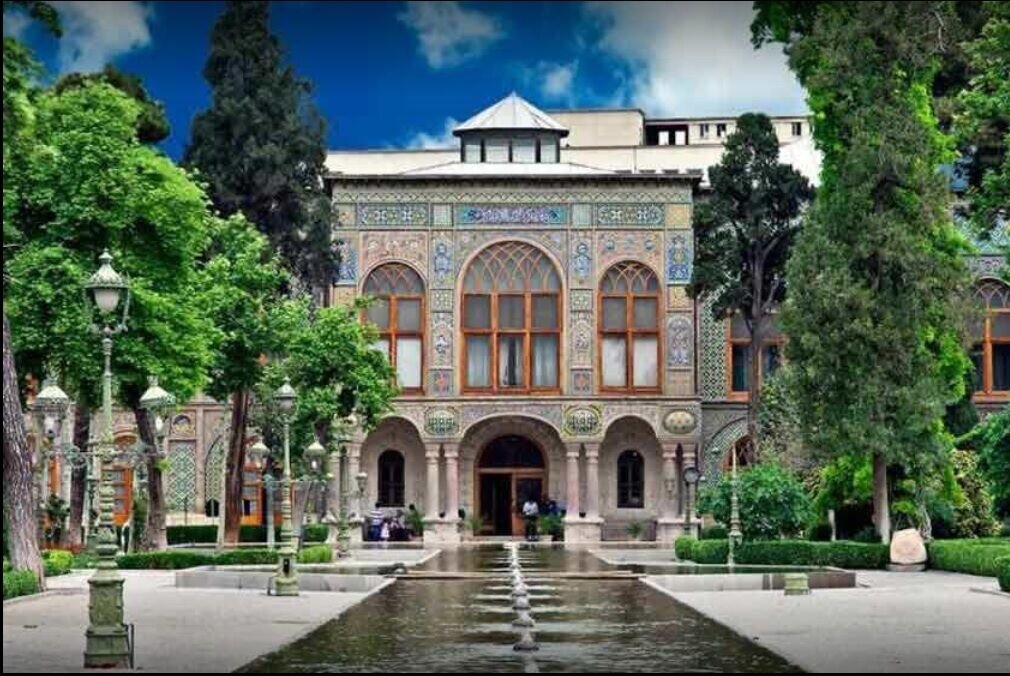Golestan Palace: centuries-old canal to be restored to revive Persian garden layout

TEHRAN – Restoration work on a historical water canal at Tehran’s UNESCO-listed Golestan Palace is set to begin after 13 years, as part of efforts to revive the traditional geometry of the Persian garden.
The north-south stream, also known as the Naseri canal, named after the Qajar monarch Naser al-Din Shah, was last restored in 2012 through nonstandard methods and later abandoned, IRNA reported on Monday.
The new restoration aims to conceptually recreate the flow of water and restore the original spatial design of the palace gardens, officials said.
Ali Omidali, expert for the Golestan Palace World Heritage Site, said the restoration plan was drafted in 2024 and approved by the site’s steering and technical councils.
“Because the original qanat that supplied the canal has dried up, the restoration will be symbolic, using circulating water to recreate the sense of flow and preserve the garden’s central geometry,” Omidali told IRNA.
He said the canal will contain about 50,000 liters of water flowing at a shallow depth of around 10 centimeters. To conserve resources, fountains within the palace complex have also been repaired, including the Almas Mansion fountain, which was restored earlier this year using modern sealing technology.
“The Naserieh Canal forms the core of the Persian garden layout,” Omidali said. “Restoring geometric order, planting climate-adapted species, and rehabilitating garden axes are key elements of the project.”
Golestan Palace Director Afarin Emami said the complex still uses a historic well to irrigate its green spaces. After the canal’s restoration, part of the well water will be redirected into the canal for aesthetic purposes, she said.
Emami added that during summer, when the well’s water level drops, the Tehran municipality provides additional water by tanker. She said the site has ended the use of chlorine for water clarification to allow natural recycling of water within the garden and that a smart irrigation study is underway in cooperation with the Cultural Heritage Ministry.
According to Emami, the project will allow Golestan Palace to recover part of its historic structure and symbolically revive the concept of the Persian garden in the center of Tehran.
Located in the heart of Tehran’s historic core, the palace complex is one of the oldest in the city, originally built during the Safavid dynasty within the historic walled city. Over time, it underwent several expansions, receiving its most defining features in the 19th century, when it was designated as the royal residence and seat of power by the Qajar ruling family. Today, the Golestan Palace complex comprises eight main palace structures, primarily used as museums, along with the eponymous gardens, a central green space surrounded by an outer wall with gates.
The complex exemplifies the architectural and artistic achievements of the Qajar era, including the integration of European motifs and styles into Persian art. It served not only as the governing base of the Qajar kings but also as a residential and recreational compound and a center of artistic production during the 19th century. Through these activities, it became a primary source and hub of Qajar art and architecture.
Golestan Palace offers a unique and rich testimony to the architectural language and decorative arts of the Qajar period, particularly reflecting the legacy of Naser al-Din Shah. The palace showcases European-inspired artistic motifs alongside Persian traditions, representing some of the earliest examples of a synthesized European-Persian style. This blend became a defining characteristic of Iranian art and architecture in the late 19th and 20th centuries, with parts of the palace complex regarded as foundational to the modern Iranian artistic movement.
AM
Leave a Comment